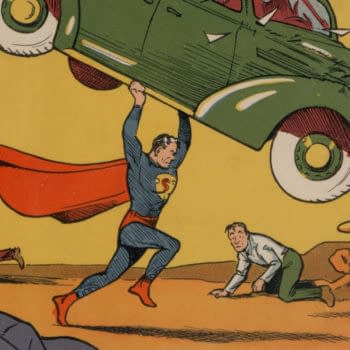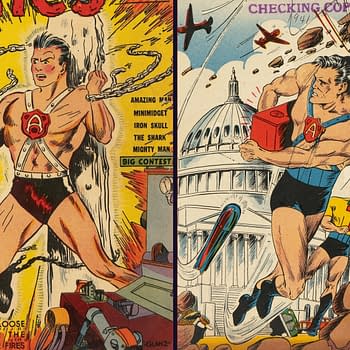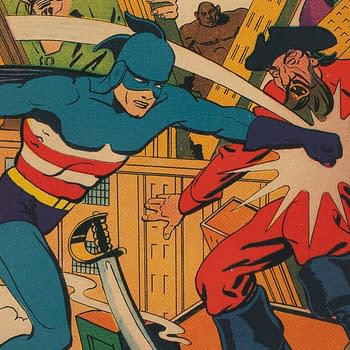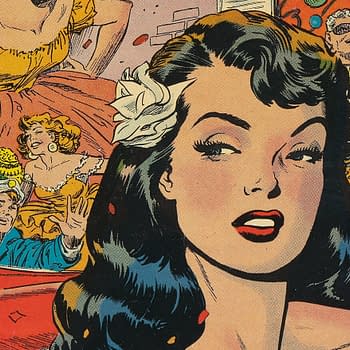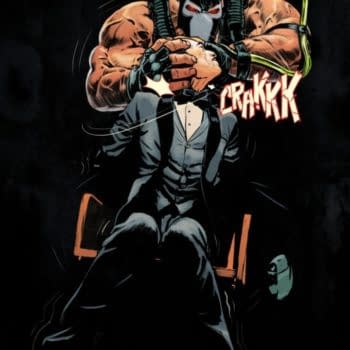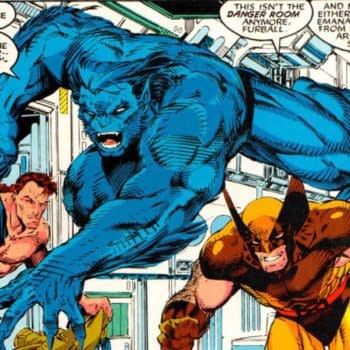Posted in: Comics, Heritage Sponsored, Vintage Paper | Tagged: bill everett, golden age, Hillman Periodicals
Bill Everett's The Conqueror in Victory Comics #3, Up for Auction
Bill Everett's The Conqueror debuted in Victory Comics from Hillman Periodicals as a superhero transformed by cosmic rays.
Beginning with issue #3, Victory Comics contained a brief letter column with answers to reader emails by editor John H. Compton (presumably). Something of a rarity in the Golden Age, one eyebrow-raising letter in this issue had a reader taking issue with the focus on what he termed as "England's War" and preferred that Victory Comics hero The Conqueror take on Stalin in Russia. While this issue hit the newsstands several weeks before the US's declaration of war, Compton replied that this was not just England's war, but ours as well, and now even Stalin's war. World events were moving both dramatically and quickly through the second half of 1941, and one interesting coincidence would be seized on by Compton throughout the remainder of this short series. An underappreciated World War II era superhero comic featuring Bill Everett artwork, there's a Victory Comics #3 (Hillman Publications, 1941) CGC GD/VG 3.0 Off-white to white pages up for auction in the 2023 January 15-16 Sunday & Monday Comic Books Select Auction #122303 at Heritage Auctions.
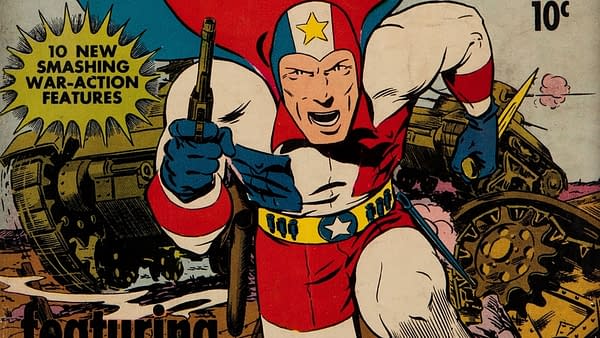
The first issue of Victory Comics hit the newsstands around March 16, 1941 according to copyright records. It's an obvious enough name for a WWII-era comic book title, certainly. But a short time later, the "V for Victory" media campaign was launched in England and spread like wildfire. "V for Victory" is well-remembered symbolism from WWII, but that symbolism has fascinating origins. The V symbol was originally the lynchpin of a British propaganda campaign launched by BBC assistant news editor Douglas Ritchie. Via regular radio broadcasts that began on July 20, 1941 and accompanying newspaper coverage around the globe, Ritchie assumed the identity "Colonel Britton", calling for the formation of what he called the "V-Army" among the citizens of territory occupied by the Nazis as well as everywhere in the world. The V-Army was called on to make the V symbol on walls, doors, and pavement everywhere in occupied territories as a symbol of a secret but massive resistance. Further, they were also to tap out the V sign in morse code — three dots and a dash — to embolden fellow resisters and strike fear into Germany. Finally, of course, raising two fingers of the hand to flash a V sign was also encouraged. This form of the V sign was further popularized with its use by Winston Churchill. Finally, the V-Army was asked to be ready to take more direct action. Colonel Britton's identity was kept a secret until he was revealed to be Ritchie in 1945.
Victor Fox's V-Comics would later build its V-Man feature around these details, and Compton saw the obvious connection to his comic title by the time Victory Comics #3 hit the newsstands, making a show of having Victory Comics jump on the trend in what would become the final two issues of the series. An overlooked character from one of the most important creators in comic book history, there's a Victory Comics #3 (Hillman Publications, 1941) CGC GD/VG 3.0 Off-white to white pages up for auction in the 2023 January 15-16 Sunday & Monday Comic Books Select Auction #122303 at Heritage Auctions.





